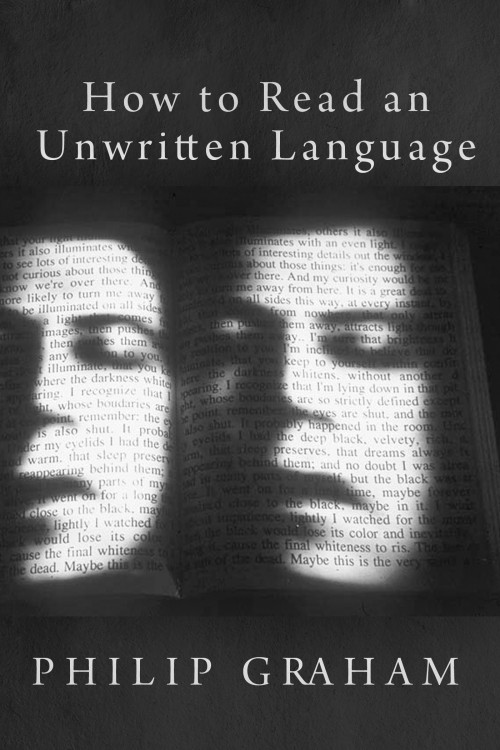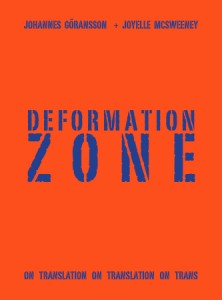
 The Montevidayans, a loose group of writers and poets and visual artists (including Joyelle McSweeney, Johannes Goransson, Lara Glenum, Danielle Pafunda, and, more loosely, Kate Bernheimer), are distinguished from the preponderance of those who are identified (or who self-identify) as avant-garde or experimental or “new” or otherwise willfully other, by their willingness to embrace and explore rather than to exclude, and by their idea that art can accommodate the high, the low, the middle, the sideways, the backwards, the constructive, the destructive, the deconstructive, the narrative, the anti-narrative, the lyric, the dramatic, the miniature, the epic, the restrained, the willfully artful, the willfully artless, the garish, the respectable, the kitschy, the hybrid, the hi-bred, the high bread, and the red hype. Where others out of explicit big-timing (and implicit self-protection or self-promotion) construct ever smaller boxes within which art might reside — and say, implicitly (and sometimes explicitly): because I reject your standard notion of rules, which are meant to bind and shame me, I will make an idiosyncratic notion of rules, which are meant to bind and shame all who are not like me — the Montevidayans, in general, say: Yes.
The Montevidayans, a loose group of writers and poets and visual artists (including Joyelle McSweeney, Johannes Goransson, Lara Glenum, Danielle Pafunda, and, more loosely, Kate Bernheimer), are distinguished from the preponderance of those who are identified (or who self-identify) as avant-garde or experimental or “new” or otherwise willfully other, by their willingness to embrace and explore rather than to exclude, and by their idea that art can accommodate the high, the low, the middle, the sideways, the backwards, the constructive, the destructive, the deconstructive, the narrative, the anti-narrative, the lyric, the dramatic, the miniature, the epic, the restrained, the willfully artful, the willfully artless, the garish, the respectable, the kitschy, the hybrid, the hi-bred, the high bread, and the red hype. Where others out of explicit big-timing (and implicit self-protection or self-promotion) construct ever smaller boxes within which art might reside — and say, implicitly (and sometimes explicitly): because I reject your standard notion of rules, which are meant to bind and shame me, I will make an idiosyncratic notion of rules, which are meant to bind and shame all who are not like me — the Montevidayans, in general, say: Yes.
This is not the only reason I am drawn to their work READ MORE >



 Three of Philip Graham’s early books are newly available in Dzanc/Open Road ebook editions. Graham asked me to write the introduction for one of them, The Art of the Knock, and while I was working on it, I asked him a few questions to satisfy my curiosity about his years working with Donald Barthelme and Grace Paley, his time in Africa, and his thoughts on symmetry and design, which are influenced in part by the poetry of Charles Simic and the plays of William Shakespeare.
Three of Philip Graham’s early books are newly available in Dzanc/Open Road ebook editions. Graham asked me to write the introduction for one of them, The Art of the Knock, and while I was working on it, I asked him a few questions to satisfy my curiosity about his years working with Donald Barthelme and Grace Paley, his time in Africa, and his thoughts on symmetry and design, which are influenced in part by the poetry of Charles Simic and the plays of William Shakespeare.




 Christine Schutt is the author of two short story collections, A Day, A Night, Another Day, Summer and Nightwork. She is also the author of two novels: All Souls, which was a finalist for the 2009 Pulitzer Prize, and Florida, a finalist for the 2004 National Book Award. With Diane Williams, she edits the literary journal NOON. Her new novel, Prosperous Friends, will be published by Grove Press on November 6.
Christine Schutt is the author of two short story collections, A Day, A Night, Another Day, Summer and Nightwork. She is also the author of two novels: All Souls, which was a finalist for the 2009 Pulitzer Prize, and Florida, a finalist for the 2004 National Book Award. With Diane Williams, she edits the literary journal NOON. Her new novel, Prosperous Friends, will be published by Grove Press on November 6.



